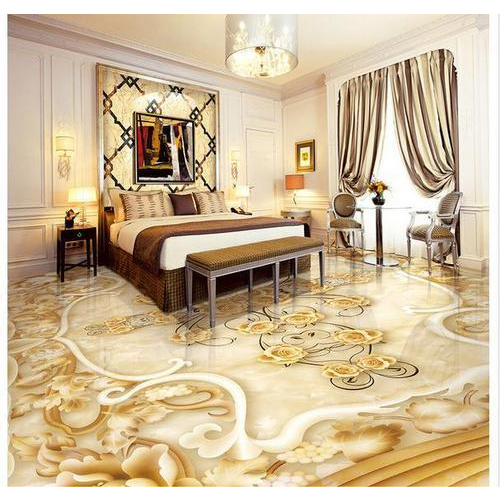3D tiles design represents a groundbreaking approach in interior design, offering a unique way to add texture, depth, and visual interest to walls and surfaces. Unlike traditional flat tiles, 3D tiles feature intricate patterns and raised elements that create a sense of dimensionality and movement. This guide delves into the benefits of 3D tiles, their diverse applications, and key considerations for integrating them into your space.
Advantages of 3D Tiles:
-
Visual Impact: One of the primary benefits of 3D tiles is their ability to create a striking visual impact. The raised patterns and textures add depth and dimension to surfaces, making them stand out as focal points in any room. Whether used on feature walls, backsplashes, or accent areas, 3D tiles can transform a plain surface into a dynamic and engaging visual element.
-
Texture and Movement: 3D tiles bring an added layer of tactile experience to interior spaces. The varying textures and patterns can evoke a sense of movement and fluidity, enhancing the overall sensory experience of a room. This is particularly effective in spaces where you want to create a dramatic effect or add a touch of luxury.
-
Versatility: 3D tiles are versatile and can be used in various applications throughout the home or commercial spaces. They work well on walls in living rooms, dining areas, bathrooms, and even ceilings. Additionally, they can be utilized in commercial environments such as lobbies, offices, and retail spaces to make a memorable impression.
-
Light and Shadow Play: The three-dimensional nature of these tiles creates intriguing light and shadow effects. As light sources change throughout the day, the shadows cast by the textured surfaces add further depth and interest. This dynamic interplay between light and texture can enhance the ambiance of a space.
Design Possibilities:
-
Feature Walls: One of the most popular uses for 3D tiles is on feature walls. Whether it’s behind a fireplace, a headboard in the bedroom, or as a dramatic backdrop in a living area, 3D tiles can create a stunning focal point that adds character and style to the space.
-
Backsplashes: In kitchens and bathrooms, 3D tiles make for eye-catching backsplashes. Their texture contrasts beautifully with flat surfaces such as countertops and cabinetry, providing a stylish and functional element that also protects the wall from splashes and stains.
-
Accent Pieces: For a subtler approach, 3D tiles can be used in smaller accent areas, such as behind mirrors, in shower niches, or as a decorative border. These applications allow you to incorporate the dynamic qualities of 3D tiles without overwhelming the space.
-
Ceilings and Floors: Although less common, 3D tiles can also be used on ceilings or floors to create unique design elements. On ceilings, they add a sense of architectural interest, while on floors, they can create a textured and visually intriguing foundation.
Material Options:
3D tiles come in a variety of materials, each offering different aesthetic and practical benefits:
-
Ceramic and Porcelain: These materials are popular for their durability and ease of maintenance. They are available in a wide range of colors and finishes, making them suitable for diverse design preferences.
-
Glass: Glass 3D tiles offer a sleek, modern look and can reflect light beautifully. They are often used in contemporary designs to enhance the play of light and create a luminous effect.
-
Stone: Natural stone 3D tiles, such as marble or granite, add a luxurious and timeless quality to spaces. They are ideal for high-end designs where natural beauty and durability are desired.
Installation and Maintenance:
Proper installation is crucial for achieving the best results with 3D tiles. It is essential to ensure that the surface is clean, smooth, and properly prepared before installing the tiles. Due to their intricate designs, precise alignment and spacing are necessary to maintain the visual integrity of the patterns. Professional installation is often recommended to achieve a flawless finish.
Maintenance of 3D tiles depends on the material used. For ceramic and porcelain tiles, regular cleaning with a mild detergent and water is usually sufficient. Glass tiles may require specific cleaners to maintain their shine, while natural stone tiles may need periodic sealing to protect against staining and moisture.
**In summary, 3D tiles design offers a compelling way to enhance your space with dynamic textures and visual depth. Their versatility, visual impact, and ability to create engaging light and shadow effects make them a valuable addition to any interior design project. By choosing the right material and ensuring professional installation, you can achieve a striking and sophisticated look that transforms your space into a visually captivating environment.




